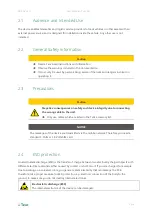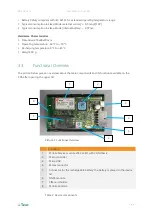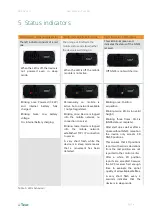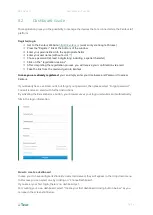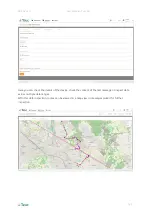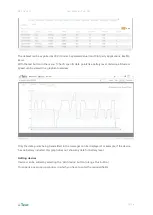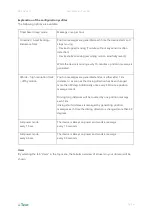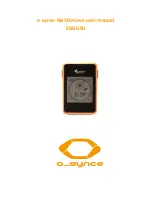
SBC AVL 4G
User Manual - Telic AG
Pg 18
low power mode. An input can be configured to wake up and stay awake until the input goes to
low again.
Motion Sleep Mode
If the motion sensor detects stationary, the device will switch off GNSS and mobile service modules,
and µC is switched to low power mode. Changes from "stationary" to "moving" will always wakeup
the system. Then it will stay awake as long as the sensor detects movement. GNSS and mobile
modules are turned on. If the device detects "stationary" for the stationary detection time period,
the device goes into the sleep mode after 60 seconds.
An input can be configured to wake up and stay awake until the input goes to low again.
Endurance Mode
Basically the Endurance Mode is similar to the Timer Sleep mode, combined with the Motion Sleep
Mode. As long as the device is moving, it behaves like in Timer Sleep mode. As soon as it falls to
stationary it wakes up, sends the stationary event (if configured) and falls back to sleep until the
next movement without generating cyclic messages. This sleep in stationary state can be
interrupted by routine or fixed reporting time events.
7.3
Basic configuration
The device can be configured via either serial interface or SMS.
In the first case you will need a simple cable (micro USB – USB connectors) and a serial terminal
program (e.g. Realterm).
In the second case, you will need in the device a SIM supporting SMS (M2M SIMs typically don’t
support them).
Before you insert the SIM card and activate the device, make sure the PIN is disabled or set to 0000.
Otherwise it can happen that the PIN is entered incorrectly three times, and the SIM falls into the PUK
lock.
This would be deactivated again by a mobile phone.
When sending SMS to a device through a mobile phone, the phone number of the latter must be
visible (not hidden), otherwise the device won’t send its reply to the sender.
Afterwards, you can check the flashing behaviour, Mobile LED should flash once, when the device is
logged into the mobile network, and twice when an IP connection to the server is established.
More detailed information can be found in the 5th chapter of this manual.
A lot of parameters can be configured in order to implement the proper use case.
Besides, the unit has to be configured in order to forward messages (events) to the proper server; in
the following paragraphs some scenarios will be illustrated as examples (all the details can be found in
the SW specifications, basic and expert type).
Tracking – typical configuration profiles
Pedestrian & Vehicle Live (1min interval)
Position messages are generated every 60 seconds when in motion, regardless of speed or changes of
driving direction.

